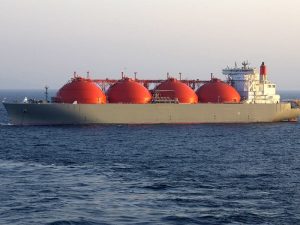It is not just that the energy you don’t use – the so-called “negawatts”— is the cheapest. It can also be the most reliable when the going gets tough.
Last summer, when the wholesale market generators couldn‘t produce enough energy to keep the system stable, market operator AEMO contracted demand response from large C&I (commercial and industrial) customers to avoid blackouts on two days in Victoria and South Australia, at a cost of $52 million.
That was using the Reliability and Emergency Reserve Trader (RERT) mechanism, which is seperate to the wholesale (spot) market.
Last week, they called on the RERT again, but were not so lucky. It came up short, and rolling blackouts ensued on Friday when very high demand (mostly from air conditioners) came up against the shutdown of several coal units in Victoria and low wind in South Australia.
That is not a criticism of AEMO. The RERT is important. It is relatively expensive, but it’s a second last resort, and may not be enough to avoid the last resort – rolling blackouts – when there is a severe heatwave.. There is more we can do within the wholesale market to moderate demand, keep prices in check, and reduce the need for involuntary load shedding.
Since last Friday, big businesses and other commentators have said they are prepared to do more to reduce their demand, as long as it’s voluntary and they are fairly compensated.
But, crazily, AEMO can’t pay people to do demand response in the wholesale market, even on hot days when generators are dropping like flies and those that are still running are being paid $14,500/MWh.
It’s just so happens that the rule maker, the AEMC, is considering a change to the energy market that will fix that: the wholesale demand response mechanism.
It has been proposed by the Public Interest Advocacy Centre, Total Environment Centre and The Australia Institute. It would allow customers to be paid by aggregators, called Demand Response Service Providers for the to reduce their load when spot market prices go sky high.
Following recent changes by the AEMC, demand response aggregators already bid into the NEM’s ancillary services market. This, along with similar recent improvements to RERT, help AEMO delivery security and stability measures at the lowest possible cost. We want to see the same changes in the $17 billion pa wholesale market.
How would it work? Given enough notice, a cold store will precool its freezers and then turn them down for an hour or two when the spot price is high. There is no impact on performance, and they’d turn a handy profit.
Households could participate. Home battery owners could be paid to to discharge when prices are high – and even to charge up when spot prices hit negative territory.
This demand response would be aggregated and bid into the spot market by DRSPs, saving all consumers money through improved competition.
Why don’t retailers do this already?
They do a little, but the amount is trivial by international standards, and is hampered by being outside the wholesale market. Concerningly, in its 2018 wholesale electricity market performance report, the AER observed that wholesale demand response by retailers had actually decreased in the last year – just when it’s needed more than ever.
Why?
Because lower demand means less profit for retailers. The big retailers who have their own power plants have the most to lose, and are leading the charge against the demand response market reform. In fact, some C&I customers are explicitly forbidden, as part of the contract with their retailer, from doing demand response.
Big gentailers are joined in opposing DR reforms like the WDR mechanism by some smaller retailers, who have niche demand response deals with their own customers and don’t want to face more competition. Yet it is supported by most other stakeholders including state governments, networks and large C&I and small consumer advocates.
Readers cursed by long NEMories may recall that we’ve been here before. The AEMC considered a demand response rule change a few years ago but ultimately rejected it.
One of the arguments retailers used was this supposedly high cost of implementing IT and billing system changes. The figure they quoted was over $100 million. This was in response to a multiple-choice questionnaire, and had no evidence backing it up.
There is a cost, but with the systems changes being put in place now to implement the global and five minute settlement rule changes, it will be minimal; so we’re not expecting the AEMC to be swayed by nonsense nine figure claims this time.
Another argument retailers are putting up is that demand response will make it more difficult for them to hedge against spot market fluctuations, ultimately increasing the retail cost of energy.
This is rubbish. The demand response market will take time to grow, and some wholesale demand response will be scheduled the day ahead: just like scheduled generation. It’s competition, stupid.
This time around retailers have (via their peak body, the Australian Energy Council) ceded considerable ground, accepting that demand response should be part of the wholesale market. But they still want to retain control it by ensuring that they remain the gateway between aggregators and consumers, giving themselves the power to veto any such agreements.
There is a lot at stake. Bidding behaviour, plant withdrawal and breakdowns by fossil generators last week pushed the wholesale market up to the regulated cap of $14,500 per megawatt-hour for five hours on Thursday and Friday, effectively costing consumers about $1 billion and forcing AEMO to introduce an administered price cap of $300.
But price spikes and rolling blackouts will be less common if the wholesale market is made level so demand response can compete with generators, especially as extreme weather events become more common.
For instance, the involuntary load curtailment that blacked out some South Australian households in February 2017, caused by multiple generator failures on the day, could have been avoided if just 100MW (3 per cent of the South Australian load) was voluntarily curtailed or shifted under a wholesale demand response mechanism.
On the day when an industry-wide Energy Charter is being released, it will be interesting to see whether the big retailers will honour its core commitment—to put customers at the forefront and foster collective accountability for better customer outcomes—by stepping back to allow competition from cheaper supply options.
Mark Byrne is Energy Market Advocate, Total Environment Centre and Craig Memery is Team Leader, Energy + Water, Public Interest Advocacy Centre










